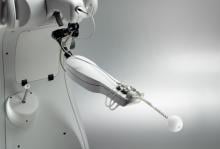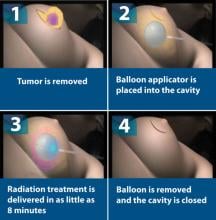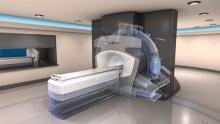In recent years, intraoperative radiation therapy (IORT) has been growing in acceptance in the U.S. as an alternative to traditional external beam radiation therapy (EBRT) for patients with early-stage breast cancer. For patients meeting appropriate selection criteria, the benefits are clear — shorter treatment times, added convenience, lower costs and fewer complications.[1, 2]
If you enjoy this content, please share it with a colleague
- Read more about The Value of Intraoperative Radiation Therapy
- Log in or register to post comments








